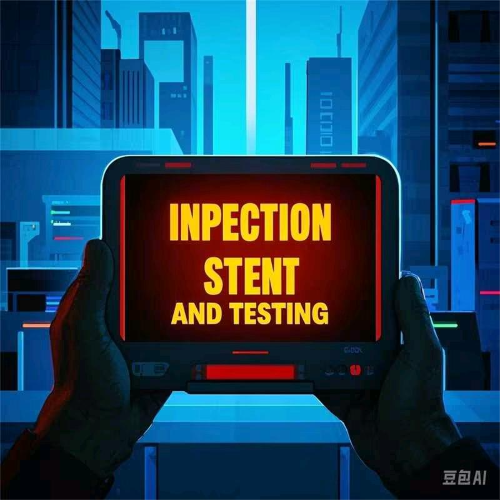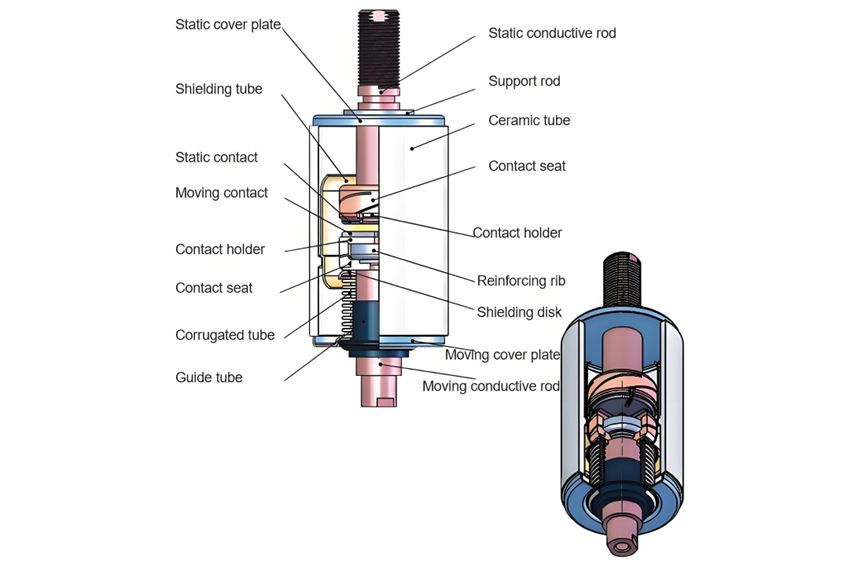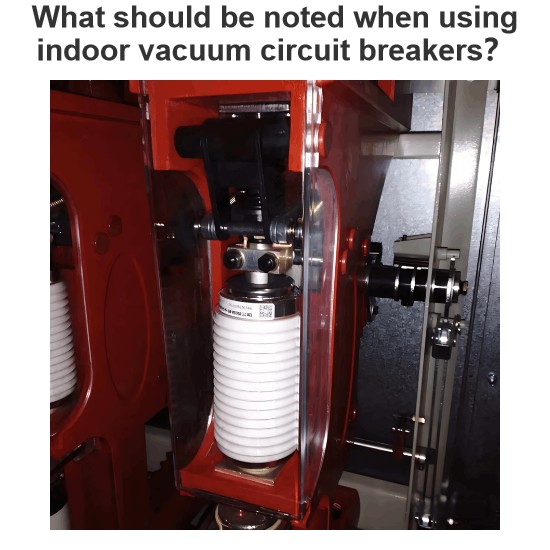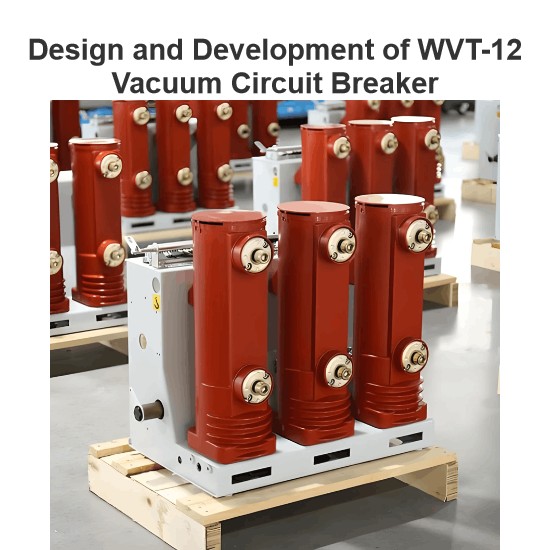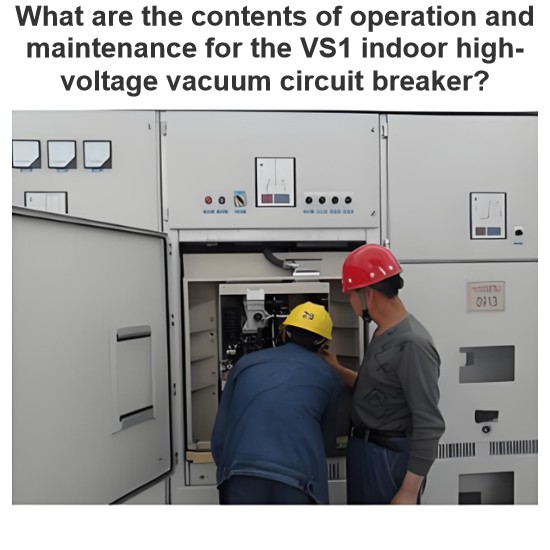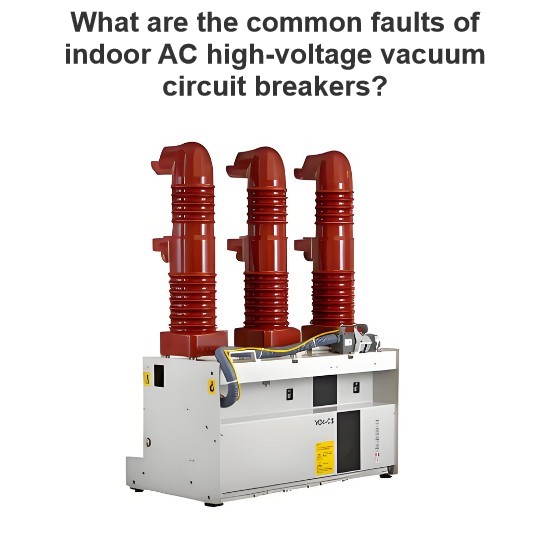Vacuum circuit breakers are widely used in distribution networks. As core components of power supply equipment, their performance hinges on both vacuum interrupters’ capabilities and circuit breakers’ mechanical characteristics (contact opening distance, stroke, pressure, average closing/opening speed, closing bounce time, opening - closing asynchronism, operation times, and cumulative allowable wear of contacts). Both are critical for reliable operation. The vacuum interrupter is the “heart” of the circuit breaker; without a high - performance, reliable one, high - reliability operation is impossible. Thus, regular detection and maintenance of interrupters, via qualitative - quantitative performance assessment, is vital for safe, stable circuit breaker operation.
1 Performance Indicators of Vacuum Interrupters
A vacuum interrupter consists of a hermetic insulation system (enclosure), conductive system, and shielding system. Its performance is characterized by insulation level (1 - min power - frequency withstand voltage, 1.2/50 impulse withstand voltage), vacuum degree, and main - circuit DC resistance. Accurate detection and evaluation require comprehensive testing and analysis of these indicators.
The power - frequency withstand voltage method is commonly used for on - site insulation testing. With testing technology advances, vacuum degree testing is increasingly applied. However, some provinces’ “Regulations for Handover and Preventive Tests of Electrical Equipment” insufficiently emphasize vacuum degree detection, even suggesting “using fracture withstand voltage as a substitute when detection is unfeasible”. This creates theoretical and practical misunderstandings, risking management and technical accidents. I recommend timely regulation revisions to improve the interrupter performance evaluation system and ensure safe distribution network equipment operation.
1.2 Fault Types of Vacuum Interrupters
As a participant in on-site detection, it is found that the faults of vacuum interrupters are divided into two categories:
- Explicit faults are characterized by shell rupture or bellows damage, leading to air ingress, loss of vacuum in the interrupter, and communication with the atmosphere.
- Implicit faults refer to the gradual decrease of vacuum degree. Although the interrupter is not in communication with the atmosphere, the internal air pressure exceeds the allowable value due to manufacturing processes, transportation, installation, or maintenance factors, resulting in the interrupter failing to meet the normal breaking capacity. The danger of such latent faults is significantly higher than that of explicit faults. The decrease in vacuum degree will seriously affect the overcurrent breaking capability of the vacuum circuit breaker, sharply shorten the service life of the circuit breaker, and may cause switch explosion in extreme cases.
1.3 Limitations Analysis of Power Frequency Withstand Voltage and Vacuum Degree Testing
From the perspective of on-site practical experience:
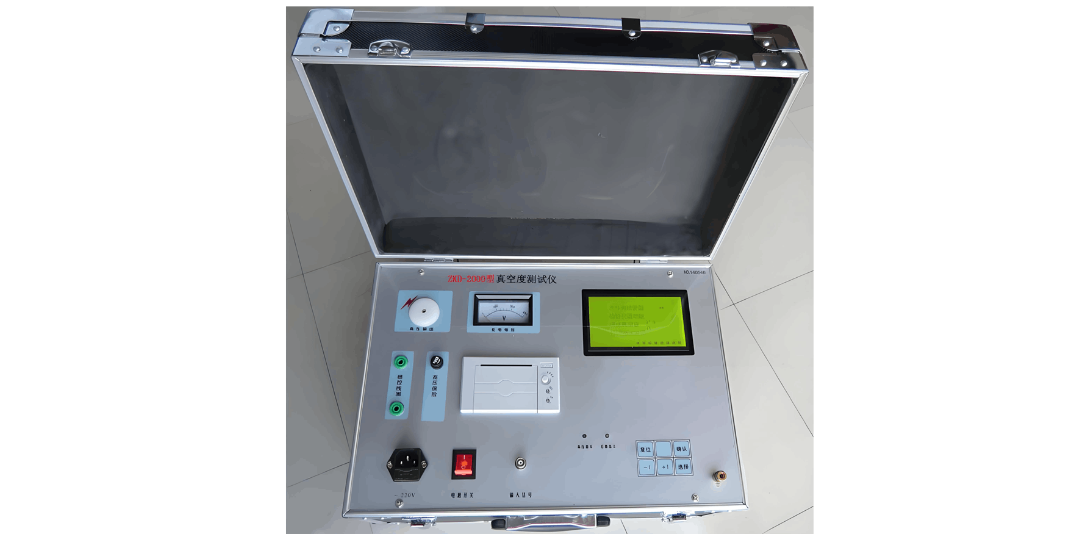
- The power frequency withstand voltage test is highly effective for detecting explicit faults and can qualitatively determine the status of the interrupter. However, it has a detection blind spot for implicit faults: when the vacuum degree is in the range of 1×10⁻²Pa to 1×10⁻³Pa, the power frequency withstand voltage test can still pass. At this time, the vacuum degree has been lower than the safety threshold of 1.66×10⁻²Pa, and the subtle differences cannot be distinguished.
- The vacuum degree tester can achieve accurate measurement within the range of 1×10⁻¹Pa to 1×10⁻⁵Pa, upgrading the detection of interrupters from qualitative analysis to quantitative stage. It can also deduce the service life of the vacuum interrupter based on the change of vacuum degree over a certain period, providing technical support for equipment reliability evaluation. However, this method has limitations in the testing range: when exceeding 1×10⁻¹Pa to 1×10⁻⁵Pa, the proportional relationship between the ion current and the residual gas density (i.e., vacuum degree) relied on by the vacuum degree tester will change, and the accuracy of the test results cannot be guaranteed. Especially for explicit faults with complete leakage (communication with the atmosphere), the test values are often close to those in the normal state, which is prone to cause misjudgment. The reason can be explained by the gas collision theory: when the gas pressure increases, the molecular density increases, resulting in a shorter mean free path of electrons. Although the number of collisions increases, the insufficient kinetic energy accumulation of electrons reduces the probability of gas molecule ionization, causing the instrument to misjudge the vacuum degree as good.
Based on on-site detection practice, it should be particularly noted that the power frequency withstand voltage test cannot be omitted during detection. Only when the interrupter passes the power frequency withstand voltage test can it be ensured that the vacuum degree is within the effective range of the tester, and the subsequent vacuum degree test results can be reliable. Therefore, the vacuum degree test and the power frequency withstand voltage test must be applied in combination. The two methods complement each other, and relying solely on either method to judge the status of the interrupter has limitations.
1.4 Main Circuit Resistance Test
In on-site detection, the DC voltage drop method is adopted for main circuit resistance testing, using a tester with a current of not less than 100A. The resistance values after handover and overhaul shall comply with the manufacturer's regulations, and during operation, they shall not exceed 1.2 times the factory value. When the contact wear of the vacuum interrupter causes poor contact, problems can be detected through circuit resistance testing. If the main circuit resistance is unqualified for a long time, it may cause the interrupter to overheat, leading to a decline in the insulation performance of related components and even short-circuit explosions.
2 Measures to Improve Vacuum Interrupter Reliability
- Regularly carry out vacuum degree testing (combined with 42kV power frequency withstand voltage test) to judge the interrupter status. When the vacuum degree decreases, the vacuum bubble must be replaced (most products require replacing three phases simultaneously if one phase is unqualified), and characteristic tests such as stroke, synchronism, and bounce shall be completed.
- Formulate detection cycles based on the preventive test regulations for electrical equipment and the unit's actual conditions. Increase monitoring frequency in the first two years after commissioning; it is recommended to conduct power frequency withstand voltage and vacuum degree tests at half a year, 1 year, 1.5 years, and 2 years after commissioning, then adjust the frequency according to operation conditions after 2 years.
- Reasonably plan maintenance cycles and inspect interrupters combined with annual preventive tests. After 2,000 normal operations or 10 rated current interruptions, check all parts and parameters; if bolts are not loose and technical parameters meet standards, continue using.
- Regularly test the contact resistance between the two ends of the interrupter and main circuit terminals to ensure it does not exceed the specified value.
- When conditions permit, perform infrared imaging temperature measurement on the conductive circuit through the observation hole to track temperature trends. Unqualified main circuit resistance, poor contact, insulation defects, or insufficient heat dissipation gradient due to unreasonable interrupter design can all cause temperature rise in conductive and insulating components, leading to accidents.
- Operation personnel shall regularly patrol the circuit breaker and pay attention to whether there is discharge outside the vacuum bubble (discharge usually indicates unqualified vacuum degree testing, requiring timely power outage for replacement). Maintenance key points:
- Check appearance and wipe dirt
- Replace the vacuum tube if the cumulative wear thickness of moving and static contacts exceeds 3mm
- Regularly inspect and adjust contact opening distance, compression stroke, and three-phase synchronism
3 Conclusions
- The power frequency withstand voltage, vacuum degree, and main circuit DC resistance of the vacuum interrupter are important indicators for characterizing its performance, playing a key role in mastering leakage trends and estimating service life.
- Vacuum degree testing and power frequency withstand voltage test each have limitations and need to be applied in combination to accurately diagnose interrupter reliability.
- The two tests cannot replace each other; interrupters failing the tests must be replaced, and it is recommended to revise relevant industry test regulations in a timely manner.
- Improving reliability should start with regular vacuum degree, power frequency withstand voltage, and main circuit resistance tests, strengthen technical training for operation and maintenance personnel, conduct careful patrols, infrared temperature measurement, and scientific detection-maintenance cycle planning to avoid explosions and other accidents caused by non-electrical misoperations during circuit breaker operation or load switching.
